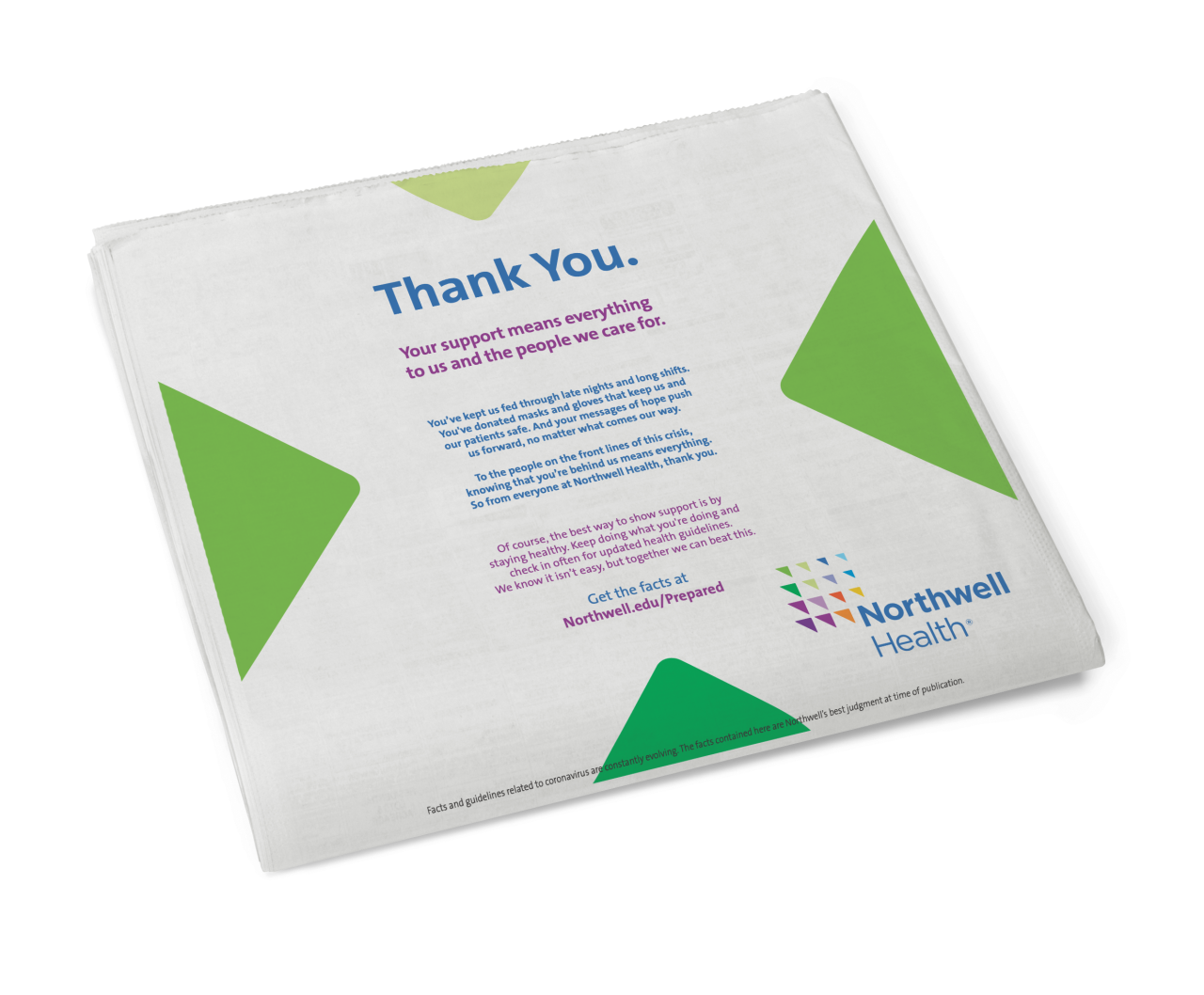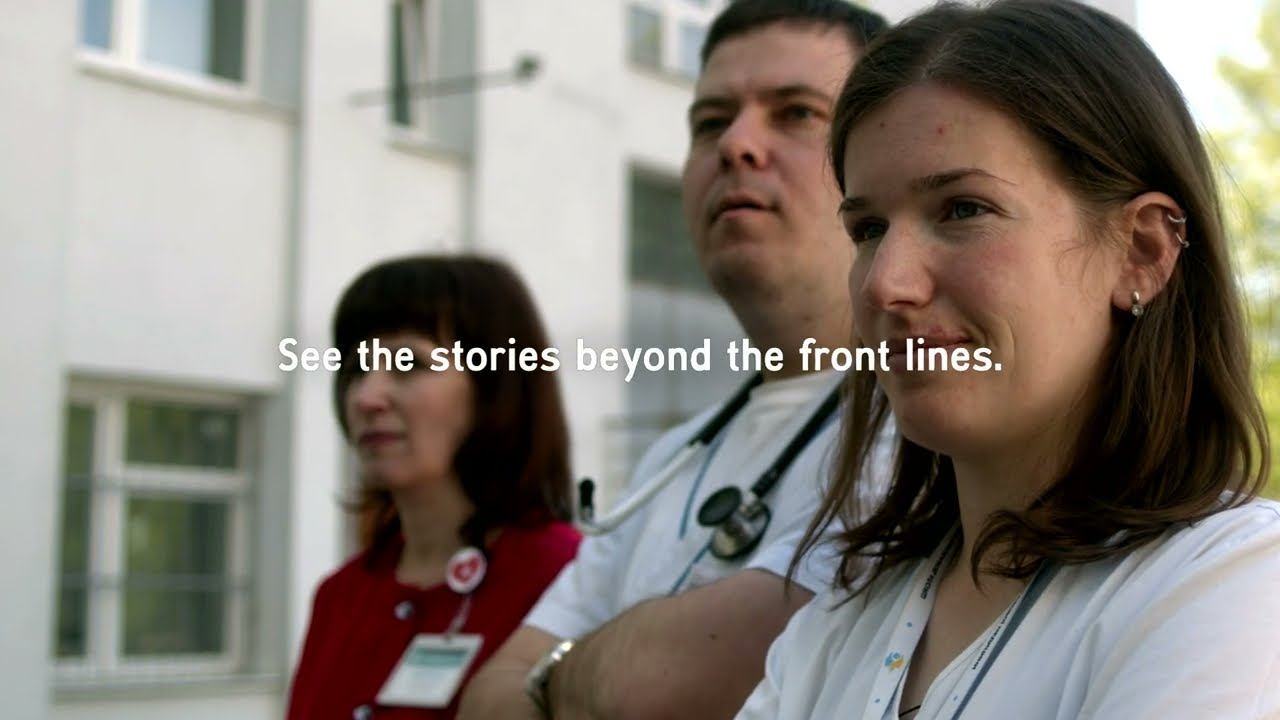
Northwell Overhauls Charity Care Policies
Northwell overhauls charity care policies – that headline alone sparks a lot of questions, doesn’t it? How will these changes affect patients? What prompted this overhaul? And what does it mean for the future of healthcare access in the region? This post dives deep into Northwell’s revamped charity care system, exploring the motivations behind the changes, their potential impact on both patients and the hospital system itself, and what it all means for the community.
Get ready for a detailed look at a significant shift in healthcare policy.
We’ll examine Northwell’s previous policies, comparing them to national standards and highlighting the criticisms they faced. Then, we’ll dissect the new policies, analyzing the specific changes and their rationale. We’ll look at the potential financial consequences for both Northwell and its patients, comparing the new system to those of other major healthcare providers. Finally, we’ll discuss the long-term sustainability of these changes and what the future might hold for access to affordable healthcare in the Northwell network.
Northwell’s Previous Charity Care Policies

Source: squarespace-cdn.com
Before the recent overhaul, Northwell Health’s charity care policies, like many large healthcare systems, operated within a complex framework balancing financial sustainability with its commitment to providing care for underserved populations. Understanding these previous policies requires examining their key features, comparing them to national trends, and acknowledging the criticisms they faced.
Key Features of Northwell’s Previous Charity Care Policies
Northwell’s previous charity care policies were primarily based on a sliding-fee scale, adjusting patient costs based on income and household size. Eligibility was determined through a financial assessment process, requiring patients to provide detailed documentation of their income and assets. The system offered varying levels of financial assistance, from reduced co-pays to complete waiver of charges, depending on the individual’s financial circumstances.
However, the application process was often perceived as cumbersome and time-consuming, creating a significant barrier for many patients. The system also had specific guidelines on what constituted qualifying financial hardship.
Comparison with National Averages
Direct comparison of Northwell’s previous charity care policies with national averages is difficult due to the lack of standardized reporting across healthcare systems. Many organizations utilize different methodologies for determining eligibility and calculating financial assistance. However, anecdotal evidence and reports suggest that Northwell’s policies, while aiming for comprehensive coverage, may have fallen short of some of the more generous programs found in other large, non-profit health systems nationally.
Some systems, for example, have implemented more streamlined application processes and broader eligibility criteria, leading to higher rates of charity care provided.
Criticisms and Concerns Regarding Previous Policies
Several criticisms surrounded Northwell’s previous charity care policies. The complexity of the application process, including extensive documentation requirements, frequently discouraged eligible patients from applying. This resulted in many individuals either forgoing necessary care or incurring significant debt. Furthermore, the strict financial eligibility criteria excluded some individuals who faced financial hardship but did not technically meet the established thresholds.
Critics also argued that the system lacked transparency, making it difficult for patients to understand the process and their eligibility for assistance. The perception of a bureaucratic and daunting process hindered access to care for those who needed it most.
Northwell’s overhaul of its charity care policies is a significant move, especially considering the shifting legal landscape. This comes at a time when the Supreme Court’s decision to overturn the Chevron Doctrine in healthcare, as reported in scotus overturns chevron doctrine healthcare , could significantly impact how hospitals interpret and apply federal regulations regarding financial assistance. Therefore, Northwell’s proactive approach might be a strategic response to this increased uncertainty in the regulatory environment.
Summary of Key Aspects of Northwell’s Previous Charity Care Policies
| Aspect | Description | Comparison to National Average | Criticisms |
|---|---|---|---|
| Eligibility Criteria | Based on income and asset verification; complex application process. | Likely stricter than some, less stringent than others. | Too restrictive; difficult application. |
| Financial Assistance | Sliding-fee scale; complete waiver possible. | Varied; comparable to some, less generous than others. | Lack of transparency; unclear communication. |
| Application Process | Extensive documentation required; time-consuming. | More complex than some streamlined systems. | Cumbersome; discouraged applications. |
| Overall Effectiveness | Provided some assistance, but access barriers existed. | Varied across national systems; room for improvement. | Inefficient; limited reach to those in need. |
The Overhauled Charity Care Policies

Source: ytimg.com
Northwell Health’s recent overhaul of its charity care policies represents a significant shift in how the system addresses the financial needs of its patients. The changes aim to improve transparency, streamline the application process, and ultimately, expand access to vital healthcare services for those who are struggling financially. These revisions are a direct response to both internal reviews and external feedback, aiming to create a more equitable and compassionate system.
The core of the updated policies focuses on simplifying the eligibility criteria, increasing financial assistance amounts, and enhancing the overall patient experience. This includes a more user-friendly application process, clearer communication regarding eligibility, and increased support for navigating the financial aspects of healthcare. The changes are not merely cosmetic; they represent a fundamental rethinking of how Northwell approaches its responsibility to the community.
Northwell’s overhaul of its charity care policies is a big step, impacting many. I’ve been thinking about the strain this puts on individuals, especially those with repetitive strain injuries like carpal tunnel. For those experiencing this pain, exploring non-surgical options is crucial, and I found some helpful information on ways to treat carpal tunnel syndrome without surgery which could be beneficial.
Hopefully, Northwell’s changes will make accessing such care easier for those in need.
Revised Eligibility Criteria and Application Process
The previous charity care application process was often cited as cumbersome and confusing. Northwell acknowledges this criticism and the new policy directly addresses it. The revised eligibility criteria are now more straightforward and easier to understand, focusing on factors like household income and assets. The application itself has been streamlined, moving to a largely online format with clear instructions and progress indicators.
This simplification aims to remove barriers that previously prevented eligible individuals from accessing the assistance they needed. For instance, the new online portal allows applicants to track their application status in real-time, eliminating the uncertainty and anxiety associated with the previous system.
Furthermore, Northwell has expanded its financial assistance program to cover a broader range of medical expenses, including prescription medications and certain out-of-pocket costs previously excluded. This expansion reflects a commitment to addressing the totality of a patient’s financial burden related to their healthcare. This is a direct response to feedback indicating that the previous policy left gaps in financial coverage, resulting in patients still struggling to afford necessary care.
Increased Financial Assistance Amounts and Expanded Coverage
One of the most significant changes involves a substantial increase in the maximum amount of financial assistance available. Previously, the maximum amount was capped at a level that often left patients with significant outstanding bills. The new policy increases this cap considerably, aiming to cover a greater percentage of eligible patients’ medical bills. For example, a patient previously receiving $5,000 in assistance might now receive $10,000 or more, depending on their individual circumstances and the cost of their care.
This adjustment directly addresses concerns that the previous assistance levels were insufficient to alleviate the financial strain on many patients.
- Simplified application process through an online portal, reducing wait times and paperwork.
- Expanded eligibility criteria, including a higher income threshold and consideration of additional financial hardship factors.
- Increased maximum financial assistance amounts, providing greater coverage of medical expenses.
- Improved communication and support throughout the application and assistance process.
- Enhanced transparency in explaining eligibility requirements and financial assistance calculations.
Impact on Patient Access and Affordability: Northwell Overhauls Charity Care Policies
Northwell Health’s overhaul of its charity care policies presents a complex picture regarding patient access and affordability. While the intention is undoubtedly to improve access for those most in need, the practical effects on different patient populations remain to be seen. The changes could significantly alter the financial burden on patients, depending on their income and the nature of their healthcare needs.
Analyzing the potential impact requires a nuanced understanding of the specific modifications within the new policies.The revised charity care policies aim to streamline the application process and broaden eligibility criteria. This should, in theory, make it easier for low-income individuals to access necessary care without incurring crippling debt. However, concerns remain about potential bureaucratic hurdles and the clarity of the new eligibility guidelines.
Furthermore, the overall level of financial assistance provided might not fully address the escalating costs of healthcare, particularly for those with complex or chronic conditions.
Changes in Patient Access Across Income Levels
The new policies are predicted to impact patients differently depending on their income bracket. For individuals earning below the federal poverty level, the broadened eligibility criteria and simplified application process should significantly improve access to care. They may find navigating the system easier and receive a greater level of financial assistance than under the previous policies. Conversely, those just above the poverty line might find themselves in a more precarious situation.
They may no longer qualify for the same level of assistance as before, leaving them struggling to afford essential medical services. Middle-income individuals, who previously received little to no charity care, are unlikely to see any significant change in their access to care.
Hypothetical Scenario: Comparing Old and New Policies
Consider Maria, a single mother of two with a chronic illness requiring regular specialist visits and medication. Under the old Northwell charity care policy, Maria’s income was just above the threshold for qualification, leaving her with substantial medical bills. She frequently delayed or forwent necessary care due to financial constraints. Under the new policy, let’s assume the income thresholds have been adjusted upwards and her application process is significantly streamlined.
This means she might now qualify for financial assistance, allowing her to access the necessary care without the same level of financial burden. This improved access could lead to better health outcomes for Maria and her family.
Financial Implications for Patients Under Old and New Policies, Northwell overhauls charity care policies
The following table illustrates the potential financial impact of the policy changes on patients with varying incomes and healthcare needs. These figures are hypothetical and intended to illustrate the potential differences, not represent precise financial data.
| Patient Income | Healthcare Need | Estimated Cost Under Old Policy | Estimated Cost Under New Policy |
|---|---|---|---|
| Below Federal Poverty Level | Routine Checkup | $200 (after partial coverage) | $50 (after significant charity care) |
| Slightly Above Poverty Level | Emergency Room Visit | $5000 (high out-of-pocket) | $2000 (reduced out-of-pocket with partial charity care) |
| Middle Income | Surgery | $15,000 (high out-of-pocket) | $15,000 (no change) |
| Above Average Income | Prescription Medication | $200/month (full price) | $200/month (no change) |
Financial Implications for Northwell Health
Northwell Health’s overhaul of its charity care policies presents a complex financial picture. While the changes aim to improve patient access and affordability, they also carry significant implications for the organization’s budget, sustainability, and fundraising efforts. Understanding these potential impacts is crucial for ensuring the long-term financial health of Northwell and its ability to continue providing high-quality care.The new charity care policies, while ethically commendable, will likely increase Northwell’s uncompensated care expenses in the short term.
This is because the broadened eligibility criteria may lead to a higher number of patients qualifying for financial assistance. The increased cost of providing care to this larger population could strain Northwell’s operating budget, potentially impacting other essential services and initiatives. For example, if the charity care budget expands by 15%, it might necessitate reductions in capital improvements or staff training programs.
Impact on Northwell’s Operating Budget and Financial Sustainability
The potential increase in uncompensated care directly affects Northwell’s operating margin. A larger proportion of uncompensated care relative to total revenue could reduce profitability and threaten financial sustainability. This necessitates careful financial modeling to predict the potential impact and develop strategies for mitigation. For instance, a scenario analysis could explore the impact of a 10%, 15%, and 20% increase in charity care expenses on Northwell’s overall financial performance, considering factors like revenue growth, cost-cutting measures, and potential increases in government funding.
This analysis would then inform decision-making regarding resource allocation and budget adjustments.
Impact on Fundraising and Philanthropic Efforts
The revised charity care policies could influence fundraising and philanthropic efforts in several ways. While the increased focus on community benefit may attract new donors who are motivated by social responsibility, it could also present challenges. Some donors might be concerned about the potential financial strain on the organization, leading to decreased donations or a shift in giving priorities.
Conversely, a successful communication strategy highlighting the positive impact of the policy changes on the community could attract increased philanthropic support from foundations and individuals committed to improving healthcare access for vulnerable populations. For example, a successful campaign demonstrating the positive impact of the policy changes on the health outcomes of low-income families could attract support from foundations focusing on health equity.
Strategies to Mitigate Negative Financial Consequences
Northwell can employ several strategies to mitigate the potential negative financial consequences of the new charity care policies. These strategies include improving revenue cycle management to optimize billing and collections, negotiating favorable contracts with suppliers to reduce operational costs, exploring opportunities for increased government funding and grants specifically aimed at supporting uncompensated care, and implementing cost-containment measures without compromising the quality of care.
Diversifying revenue streams through expanding outpatient services, telehealth, and other innovative programs can also bolster financial resilience. Furthermore, investing in data analytics and predictive modeling to identify high-risk patients and develop proactive intervention strategies could reduce overall healthcare costs in the long run. For example, implementing a robust case management program could prevent hospital readmissions and reduce overall healthcare spending.
Comparison with Other Healthcare Systems
Northwell Health’s recent overhaul of its charity care policies is a significant development in the New York healthcare landscape. To understand the scope of these changes and their potential impact, it’s crucial to compare them to the approaches taken by other major healthcare systems in the region. This comparison will highlight best practices, potential areas for collaboration, and the overall context within which Northwell’s new policies operate.
Analyzing the charity care practices of other large health systems allows for a nuanced understanding of Northwell’s position. By benchmarking against peers, we can assess whether the new policies are progressive, aligned with industry standards, or potentially lagging behind. Furthermore, identifying best practices employed elsewhere can inform future refinements and improvements to Northwell’s program.
Charity Care Policy Features of Major Healthcare Systems
A comparative analysis reveals significant variations in how different healthcare systems approach charity care. While some may prioritize a more streamlined application process, others might focus on expanding eligibility criteria or offering more comprehensive financial assistance. The following table presents a simplified comparison, focusing on key features.
| Healthcare System | Eligibility Criteria | Application Process | Financial Assistance Offered |
|---|---|---|---|
| Northwell Health (Revised) | Based on income level and household size, with adjustments for exceptional circumstances. | Online and in-person applications, with simplified documentation requirements. | Discounts on services, payment plans, and potential debt forgiveness. |
| NYC Health + Hospitals | Broader income-based eligibility, including consideration of assets and expenses. | Multiple channels, including online, in-person, and through community partners. | Extensive financial assistance, including sliding-scale fees and significant debt relief. |
| Mount Sinai Health System | Income-based, with consideration of family size and medical expenses. | Online application, with assistance available through patient financial services. | Financial assistance programs, including payment plans and discounts. |
| NewYork-Presbyterian | Income-based eligibility, with emphasis on demonstrating financial hardship. | Application process involves documentation review and financial assessment. | Offers financial counseling and various payment options, including charity care. |
Note: This table provides a general overview and specific details may vary depending on individual circumstances and program updates. Always consult the individual healthcare system for the most current and accurate information.
Best Practices in Charity Care and Potential Collaboration
Several best practices emerge from examining the policies of other systems. For instance, NYC Health + Hospitals’ extensive outreach programs to underserved communities demonstrate a commitment to proactive engagement and accessibility. Mount Sinai’s streamlined online application process could serve as a model for improving efficiency. The potential for collaboration between these organizations is substantial. Sharing data on application success rates, best practices for financial assistance, and strategies for outreach to vulnerable populations could significantly improve the effectiveness of charity care programs across the region.
Northwell’s revamped charity care policies are a step in the right direction, aiming to improve access to healthcare for those in need. This news got me thinking about the importance of preventative care, especially after reading about Monali Thakur’s hospitalization, detailed in this article: monali thakur hospitalised after struggling to breathe how to prevent respiratory diseases. Hopefully, increased access to care through Northwell’s changes will help prevent similar situations in the future.
Patient and Stakeholder Perspectives

Source: northwell.edu
Northwell Health’s overhaul of its charity care policies is a significant event with wide-ranging implications for various stakeholders. Understanding the potential impact on these groups and implementing effective communication strategies is crucial for a smooth transition and maintaining public trust. The success of these changes hinges on how effectively Northwell addresses the concerns and expectations of its patients, medical staff, administrators, and the broader community.The changes in charity care policies will undoubtedly affect different stakeholder groups in unique ways.
A transparent and proactive communication plan is essential to mitigate potential negative reactions and foster understanding.
Impact on Patient Groups
The revised charity care policies could significantly impact patient access to affordable healthcare. Patients previously benefiting from more generous charity care provisions might experience a reduction in financial assistance. Conversely, patients who previously didn’t qualify might now find themselves eligible under the new, potentially more streamlined, criteria. For example, a low-income family previously receiving comprehensive charity care might now face a higher co-pay or reduced coverage under the new system.
Conversely, a previously ineligible family meeting the newly adjusted income thresholds could gain access to previously unavailable assistance. Effective communication, therefore, needs to clearly explain the new eligibility criteria and the available levels of support. This should include simplified explanations of the application process and clear contact information for assistance.
Reactions from Patients and Community Organizations
Patient reactions could range from relief for those gaining access to care to frustration and anger for those experiencing a reduction in financial assistance. Community organizations that serve vulnerable populations will play a crucial role in navigating these changes. Some organizations might express concerns about the new policies’ impact on their clients’ access to essential healthcare services. Others may collaborate with Northwell to help patients understand and navigate the new system.
For example, a local food bank might offer workshops explaining the application process and assist patients with completing the necessary paperwork. Conversely, an advocacy group might publicly criticize the policy changes if they believe they disproportionately harm vulnerable populations. These diverse reactions highlight the need for a comprehensive communication strategy that anticipates and addresses these varied perspectives.
Northwell’s Communication Strategy
Northwell needs a multi-pronged approach to communicate the changes effectively. This should include: public service announcements on local television and radio; detailed information on their website, including FAQs and translated materials; presentations at community events and meetings with local organizations; and direct mail communications to patients who might be affected. The goal should be to provide accessible and understandable information in multiple formats to reach a broad audience.
Furthermore, establishing dedicated phone lines and email addresses for inquiries would provide direct support to those who need assistance navigating the new policies.
Improving Transparency and Addressing Concerns
To enhance transparency, Northwell should publish a detailed summary of the new charity care policies, including the rationale behind the changes, and the expected impact on patient access and affordability. They should also proactively engage with community stakeholders, including patient advocacy groups and local health organizations, to gather feedback and address concerns. Regular updates on the policy’s implementation and its effects should be made publicly available.
This continuous dialogue can foster trust and build confidence in the system’s fairness and effectiveness. Regular town hall meetings, both in-person and virtual, can provide a platform for direct interaction with patients and community members. These meetings should offer opportunities for questions and answers and should be facilitated by knowledgeable representatives who can accurately explain the policy changes and address individual concerns.
Long-Term Sustainability of the New Policies
Northwell Health’s revamped charity care policies represent a significant commitment to community health. However, the long-term viability of these changes hinges on careful planning, consistent monitoring, and proactive adaptation. Success requires not only addressing immediate needs but also anticipating and mitigating potential future challenges. This section explores the key factors influencing the long-term sustainability of these new policies.
The financial implications are paramount. While increased access to care might initially lead to higher uncompensated care costs, the long-term benefits could include improved community health outcomes, reduced reliance on costly emergency room visits for preventable conditions, and potentially, enhanced Northwell’s reputation and community goodwill, which could indirectly boost revenue streams. The challenge lies in striking a balance between providing comprehensive care and maintaining financial stability.
This necessitates a detailed, ongoing analysis of the policy’s impact on Northwell’s financial health.
Financial Modeling and Resource Allocation
A robust financial model is crucial for predicting the long-term financial impact of the new charity care policies. This model should incorporate various factors, including changes in patient volume, the cost of providing care, and potential funding sources, such as grants and donations. Regular updates to the model, incorporating real-world data, will allow Northwell to proactively adjust resource allocation to meet evolving needs.
For example, if the model shows an unexpected increase in demand for a specific service, Northwell can allocate additional resources to that area to prevent financial strain. Conversely, if a particular initiative proves less effective than anticipated, resources can be redirected to more impactful programs.
Stakeholder Engagement and Communication
Maintaining transparency and open communication with all stakeholders—patients, staff, community organizations, and donors—is essential. Regular feedback mechanisms, such as surveys and focus groups, will help Northwell understand the policy’s effectiveness from various perspectives. This continuous feedback loop will inform necessary adjustments and ensure the policies remain relevant and responsive to evolving community needs. For example, if patient feedback reveals difficulties navigating the application process, Northwell can streamline the process to improve access.
Similarly, regular communication with donors can highlight the impact of their contributions, fostering continued support.
Policy Review and Adaptation
The healthcare landscape is constantly changing. Northwell must establish a regular review process for the charity care policies to ensure they remain aligned with evolving needs and best practices. This review should incorporate data analysis, stakeholder feedback, and industry benchmarks. Based on the findings, Northwell should be prepared to adapt and refine the policies as needed. For instance, if new healthcare legislation impacts eligibility criteria, Northwell needs to promptly update its policies to comply with the law.
This flexibility ensures that the charity care policies remain effective and sustainable over the long term.
Timeline of Implementation and Potential Challenges
Successful implementation requires a phased approach with clearly defined milestones and contingency plans. This ensures that potential challenges are addressed proactively, minimizing disruptions and maximizing the positive impact of the new policies.
| Phase | Timeline | Milestones | Potential Challenges |
|---|---|---|---|
| Phase 1: Policy Rollout | Months 1-3 | Internal training, public announcement, initial application processing | Staff training delays, initial confusion among patients and staff |
| Phase 2: Monitoring and Evaluation | Months 4-12 | Data collection, analysis of initial impact, stakeholder feedback gathering | Data accuracy issues, difficulty in obtaining timely feedback |
| Phase 3: Policy Refinement | Months 13-18 | Policy adjustments based on data and feedback, updated communication materials | Resistance to change, securing additional resources |
| Phase 4: Ongoing Monitoring and Sustainability | Months 19+ | Continuous data analysis, regular stakeholder engagement, periodic policy reviews | Maintaining funding, adapting to changing healthcare landscape |
Conclusion
Northwell’s overhaul of its charity care policies represents a bold step, one with the potential to significantly impact access to healthcare for countless individuals. While the long-term effects remain to be seen, the changes implemented reflect a commitment to addressing past criticisms and improving patient affordability. The success of these new policies hinges not only on their effective implementation but also on ongoing transparency, communication, and a commitment to adapting as needed.
It’s a story that will unfold over time, and one we’ll continue to follow with keen interest.
FAQ Compilation
What specific services are covered under Northwell’s new charity care policies?
The specifics of covered services will need to be verified directly with Northwell, as the details are likely complex and vary based on individual circumstances. However, the overhaul aims to broaden access to a wider range of essential medical services.
How can I apply for charity care under the new Northwell policies?
The application process should be clearly Artikeld on Northwell’s official website. Expect to provide detailed financial information to demonstrate eligibility. Contacting Northwell directly for guidance is also advisable.
What happens if my financial situation changes after I’ve received charity care?
Northwell’s policies likely include provisions for reevaluating eligibility based on changes in financial circumstances. Contacting them directly is crucial to discuss this scenario.





